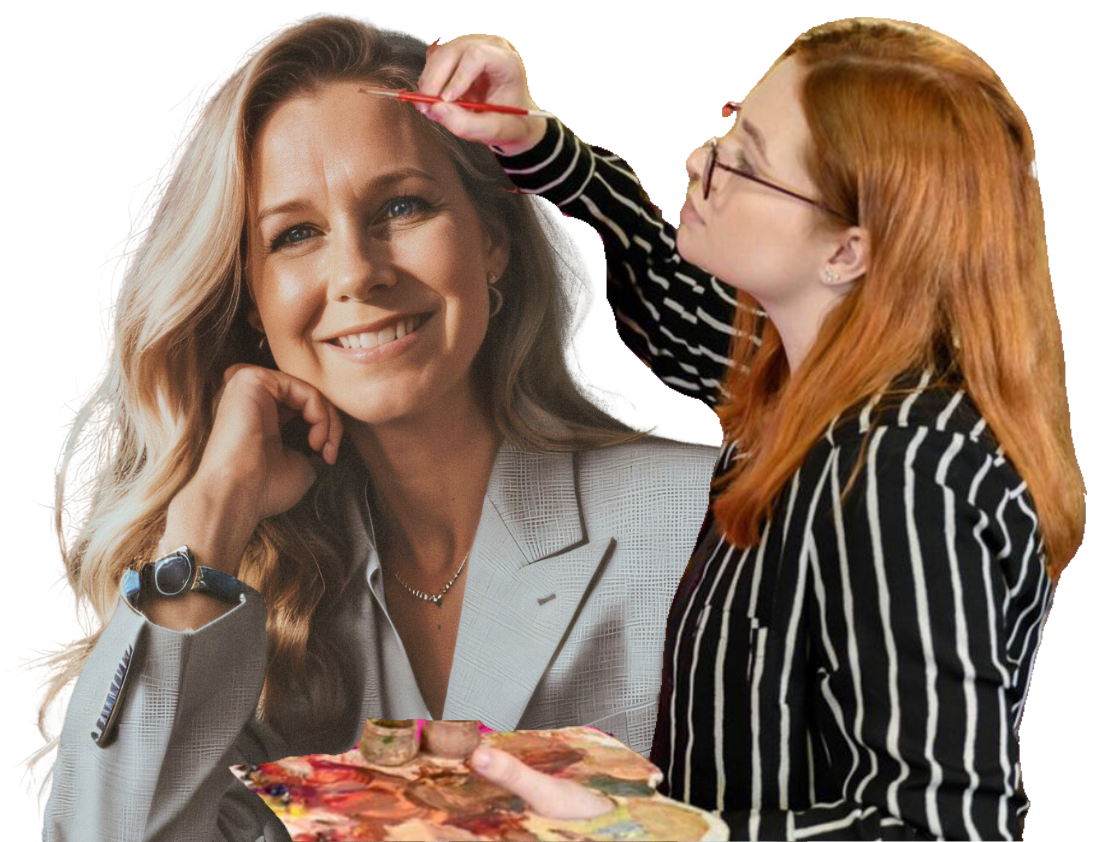AI Enhanced Photos vs. Real: Data Reveals Which to Choose for your GTM Strategy

As AI enhanced photo apps continue to proliferate and evolve, we’re seeing it impact GTM strategies.
Marketers are questioning, should I use AI or real images to market my product. What about a blend?
And even, should I use AI as a marketing strategy in and as itself, as is the case with Heinz' viral campaign.

I'm not Heinz, nor could I be because #1 it's ketchup, #2 I need to control my blood sugar (a post for another time)...
Instead I have a brand that's connected to me personally - and as you'll learn, not only is the data important, but speed, quality, and authenticity are also important deciding factors in the AI vs Real decision.
For most companies, producing quality, human-enhanced creative takes time.
You don't see any non-curated AI images on the Heinz website for example. Likely everything on that page took many (wo)man-hours to produce.

To decide if AI was right for my brand, I started by opting for speed and I click-tested AI enhanced headshots - created with the Remini App.
It took me a couple of hours to upload pics and tinker with settings to get headshots that looked like me(ish).
And then I popped them into a click-test to see which my audience liked the best.
Here's the results of the AI enhanced headshots

Before I ran this test, I would have guessed the top performer would be around 5% CTR, but to my surprise my AI headshots started off with a bang.
Now, even though image #5 won, I decided to use image #10, which was second place with 7% CTR – because I felt the suit made me look more professional and the suit-pose had more winners than the other two poses.
While I was rolling this image out, initially only changing my zoom profile image, I was a little insecure because I got the comment right away, "Oh that must be an AI generated image."

So it was obvious to some that this wasn't the real me and I could have decided not to use it, but I kept rolling it out to my social media profiles, website, pitch deck, etc… because of the data.
It only took a couple of weeks to became more comfortable seeing it, and not feeling like I'm being judged for having an AI image.
I also shared my test results in a LinkedIn post
that Brooke Clark a professional branding photographer commented on...

So we got to talking about doing a professional photoshoot.
My first thought, "Why?"
Brooke thought otherwise, pointing out flaws in the quality, "The AI headshot lighting wasn't even that good."
She's right, but I hadn't noticed. It looked fine to my untrained eye.
But now every time I look at it I think I look like a wax figure at Madame Tussauds

Brooke and I also talked about the importance of personal brand in the context of what I'm building. Not just a headshot for LinkedIn, but up-leveling my overall brand.
Because let's be real, I can't get away with wearing hoodies on the daily anymore in my new role.
So I decided to invest and spent half a day with Brooke and her team...

And received 79 proofs to choose from.
If I could have tested all 79 I would have because you know me – but I decided to select about 20 to click-test.
Discover the Real Impact of AI Enhanced Photos on Your GTM Strategy
Here are some of the results from the Real brand images:

With the top performer coming in at 6%, it came close to the AI winners, but didn't knock them off the throne.
However...
This left me hanging – which (if any) of the real images should I choose for my main profile pic on LinkedIn?
The only one that tested close to my winning wax figure pose was #15 but that pose isn't great for a profile pic because it's not a headshot.

So I decided to keep going and try another round of click-tests - this time with more closeup crops and here are the results!

Real beat AI.
Now here's where it gets interesting.
Choosing Between AI-Enhanced and Real Photos for Your GTM: What the Data Says

Examining the top 10 images across all three tests reveals an almost even split between AI and Real photos. While I tested more poses with Real images, both AI and Real achieved over 6% CTR—a winning engagement benchmark.
Since neither type emerged as a clear favorite for engagement, it signals that people respond similarly to both Real and AI-enhanced photos.
So taking the personal element out of it, if I'm a marketer and I'm strictly going for speed and engagement, AI would be the way to go.
But let's add in an intangible factor - Authenticity. People like buying from people.
AI enhanced pictures of me don't feel authentic.
So far, the machines can't replicate people well enough for me to want to frame an AI picture of myself and give to my parents for Christmas.
So even though people engage with my AI enhanced photos just the same as they do real photos...
Would they still buy from an AI version of me?
I don't have data to support or refute this, but I know my clients only signed up after having an in person meeting or zoom call with the real me.
So for a brand that involves a person, I believe authenticity is still really important, - sure you can use AI images for marketing engagement, but there needs to be a real person at some point in the buyer's journey.
Ready for my next challenge?
Before switching out my AI profile pic for a real one, I had to decide which to use.
I ruled out a few because they're just not my favorites, which left me with two to choose from.

A. Excited Jess - which ranked #1 overall
B. Legit Jess - which feels the most like me
I decided to get another opinion – I did an A vs. B LinkedIn post

and the votes were pretty evenly split.
I also received some great suggestions, like this comment from Sahil Patel

"Use A: Excited Jess to standout and stop the scroll and use B: Legit Jess for my website, pitch deck, etc... where I don't need a scroll stopper."
So here's the plan
I'll be switching out my old Madame Tussauds AI thumbnail which got 7.14% for my new Real headshot with 9.23% - and facing it the other direction so I'll be looking in on social media posts instead of out. The objective is for this 'Fun Jess' image to get noticed and drive engagement.

And use the 'Legit Jess' headshot to replace my AI headshot on all other pages and sales material where authenticity is more important than engagement.
What does this mean for Product Marketers and GTM?

Given the experiment showed equal engagement between AI and Real, this chart sums up my takeaways:
- Speed: When speed is important, use AI enhanced photos. Think social media content.
- Brand: When it comes to your brand and it's an image that you're going to use over and over and over for years - which people judge you for and decide if they want to do business with you or not - invest in higher quality human generated or human enhanced creative.
- Products vs. People: AI can enhance people and products, but it can’t replicate human authenticity—a crucial factor. Therefore, products can more readily embrace AI advancements than people.
As AI photo enhancement becomes more integrated into GTM strategies – understanding your objectives and deciding factors like speed vs quality, and engagement vs authenticity should play a role in how bullish you are on AI. And as AI continues to improve in replicating human authenticity, expect the boundaries between real and AI-generated content to blur even further, reshaping the future of GTM strategies.

